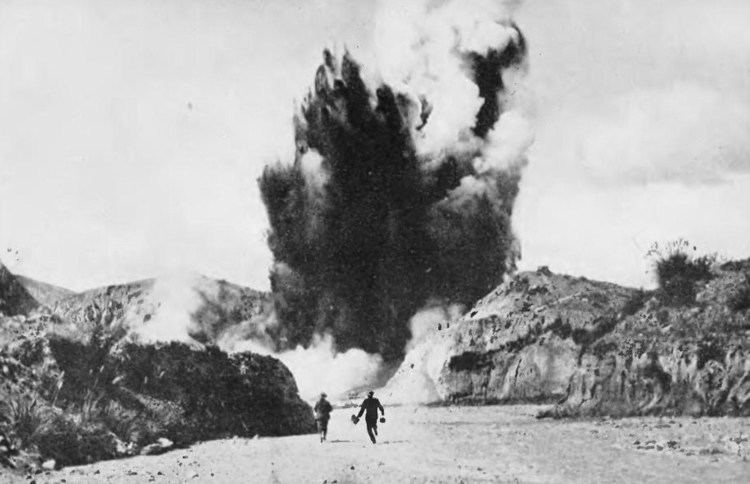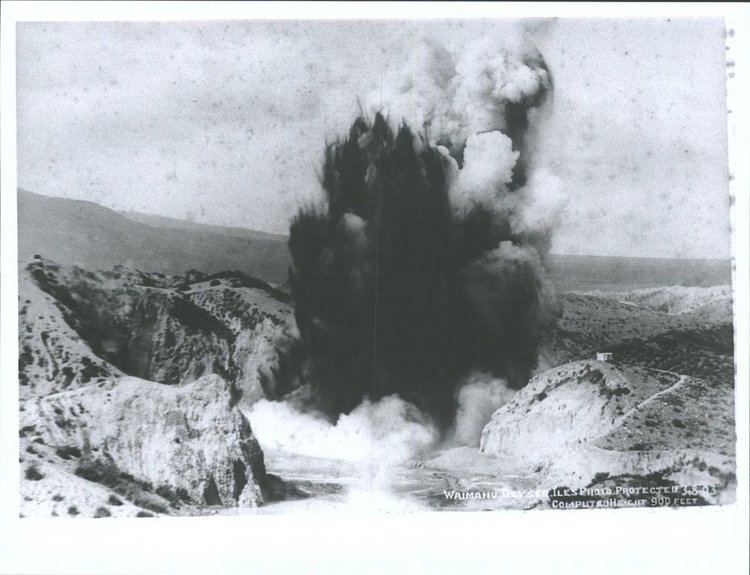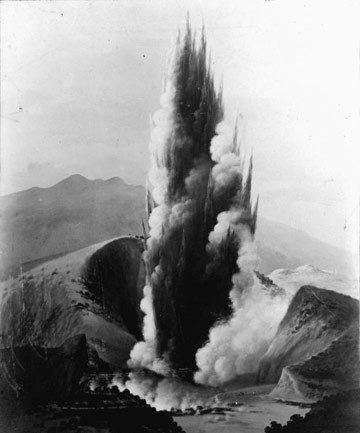Eruption height up to 1,500 feet (460 m) | ||
 | ||
Similar Mount Tarawera, Steamboat Geyser, Lady Knox Geyser, Valley of Geysers, Giant Geyser | ||
Waimangu geyser
The Waimangu Geyser, located near Rotorua in New Zealand, was the most powerful geyser in the world. Its workings were apparently created by the great 1886 Mount Tarawera eruption, which opened a 17 kilometres (11 mi) long fissure down the mountain, through Lake Rotomahana and the Waimangu Volcanic Rift Valley.
Contents

The geyser was first seen erupting in late 1900. Its eruptions were observed reaching up to 1,500 feet (460 m) in height, and it excited worldwide interest. Day trip visitors from Rotorua were keen to see the geyser erupting regularly for 5–6 hours out of a cycle of about 36 hours, and a tourist trip called the "Round Trip" ran from the summer of 1902/1903. The geyser was the catalyst for tourism to the Waimangu Valley.

The water expelled by the geyser was black with rocks and mud from the surrounding terrain, so the indigenous Māori people named the geyser Waimangu, meaning 'Black Waters'. The geyser gave its name to the surrounding geothermal region, the Waimangu Volcanic Rift Valley.

In August 1903, tourist guide Alfred Warbrick measured the depth of the 80 by 130 metres (260 ft × 430 ft) geyser lake at only 48 feet (15 m) when he launched a rowboat on the lake as a result of a dare. The lake's shallow depth was attributed to much of the ejected solid material falling back into the vent each time.

On 30 August 1903, David McNaughton, Joseph Warbrick, and sisters Ruby and Catherine Nicholls were killed after ignoring requests from Warbrick's brother Alfred to return to a safe distance, after venturing close to the edge of the geyser. The four were swept away in a sudden violent eruption.

In mid 1904, the geyser became dormant for several weeks and subsequent eruptions were shorter and weaker until they stopped on 1 November 1904. This coincided with a landslide that changed the water table of Lake Tarawera by several meters. While it was hypothesized that this was the cause for the extinction of the geyser, later studies found no apparent physical connection between these two events.
After the geyser became extinct, hydrothermal activity in the nearby Echo Crater increased, leading to eruptions in the crater in 1915, 1917, and 1924.
